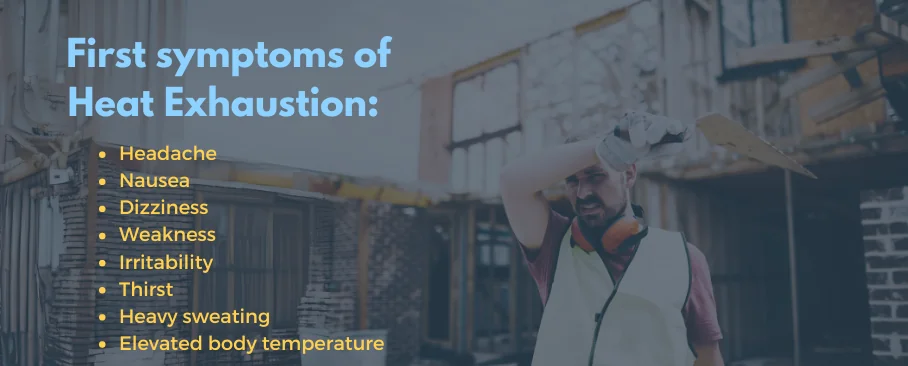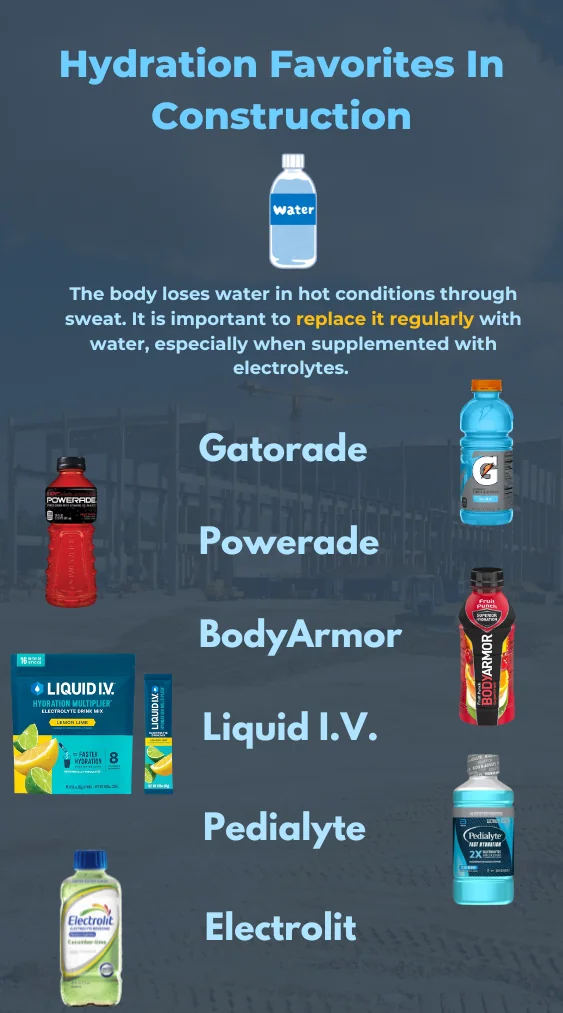
Working in construction during the summer months can be grueling. With temperatures soaring in many states, it’s crucial to understand the new OSHA Heat Safety Rule designed to protect workers from heat-related illnesses and injuries. This guide will walk you through the key aspects of this rule and offer practical tips on how to keep construction workers cool and hydrated all summer long.
Understanding The Latest In OSHA’s Heat Safety Rule
U.S Department of Labor – July 2, 2024: OSHA Proposed amendments to Standards (Title 29, CFR Parts 1910, 1915, 1917, 1918, and 1926)
The scope of this change applies to all employers with exemptions only to the following:
- Employers with no expectation of exposure above the initial heat trigger (80°F/ 26.7°C)
- Employers with short duration exposures (15 minutes or less in any 60-minute period.)
- Firefighting and certain emergency response activities.
- Employers that have indoor work areas or vehicles with consistent air conditioning below 80°F.
- Remote work or sedentary indoor work with light physical activity.

Employers Must Develop A Heat Injury and Illness Prevention Plan (HIIPP)
Employers must develop and implement a HIIPP with specific site information.
HIIPP must include:
- Types of work activities covered.
- Policies and procedures to comply with the standard.
- Identification of the heat metric (heat index or WBGT).
If the employer has employees who wear vapor-impermeable clothing, there are additional requirements such as: implementing policies and procedures for employees who wear this clothing and include this information in the HIIPP.
Other Requirements:
- A written HIIPP is required for employers with more than 10 employees.
- Heat safety coordinators must be designated to implement and monitor HIIPP.
- The identity of these coordinators must be documented in any written HIIPP.
- The employer must seek input and involvement from non-managerial employees and their representatives in the development and implementation of the HIIPP.
- The employer must monitor and review the HIIPP’s effectiveness whenever a heat incident occurs.
- HIIPP must be readily available at the work site for all employees.
- HIIPP must be in a language understood by each employee, supervisor, and heat safety coordinator.
To read more about the OSHA Heat Safety Amendment, read the regulatory text here.
How to Prepare for Summer Heat in 7 Steps
Working in construction during the summer poses significant challenges due to high temperatures. Ensuring safety in hot conditions is crucial to prevent heat-related illnesses and maintain productivity. Below is a comprehensive guide to help construction workers, safety officers, and site managers prepare for the summer heat.

Be on the lookout for heat-related symptoms:
- Heat Cramps: Muscle spasms caused by heavy sweating.
- Heat Exhaustion: Symptoms include heavy sweating, weakness, dizziness, nausea, and headache.
- Heat Stroke: A medical emergency characterized by high body temperature, confusion, and loss of consciousness. Immediate treatment is essential.
1. Plan for High Temperatures on the Job Site
Preparation is key when dealing with high temperatures:
- Monitor Weather Conditions: Keep an eye on weather forecasts to plan work accordingly.
- Schedule Smart: Perform heavy tasks during cooler parts of the day, such as early morning or late afternoon.
- Provide Shade: Set up shaded rest areas where workers can take breaks away from direct sunlight.
2. Personal Protective Equipment (PPE) for Heat Safety
Choosing the right PPE can make a significant difference:
- Lightweight Clothing: Opt for breathable, moisture-wicking fabrics.
- Cooling Vests: These can help regulate body temperature.
- Wide-Brimmed Hats: Protect the face and neck from direct sun exposure.
3. Keep Cool and Hydrated
Proper hydration and nutrition are crucial:
- Drink Water Frequently: Encourage regular water intake, even if workers aren’t thirsty.
- Electrolyte Drinks: Provide sports drinks to replenish lost electrolytes.
- Balanced Diet: Ensure meals are rich in fruits and vegetables, which can help maintain hydration.

Considerations for Choosing Hydration Drinks:
- Electrolyte Content: Key electrolytes like sodium, potassium, and magnesium are essential for maintaining hydration and muscle function.
- Sugar Content: While some sugar can help with quick energy, too much can lead to energy crashes and health issues.
- Price: Ready-to-drink options are easy, but powders and tablets are cheaper and simpler to carry around.
- Taste and Preference: Ultimately, the best hydration drink is one that the worker will consistently consume.
4. Manage Work and Rest Cycles
Implementing structured work and rest cycles can prevent overheating:
- Regular Breaks: Schedule frequent breaks in shaded or air-conditioned areas.
- Rotation of Tasks: Rotate workers through different tasks to avoid prolonged exposure to heat.
5. Training and Communication for Heat Safety
Education and communication are critical components of heat safety:
- Heat Safety Training: Provide training sessions on recognizing symptoms and administering first aid.
- Clear Communication: Use clear signals and reminders for breaks, hydration, and monitoring each other for signs of heat stress.
6. Emergency Response Procedures for Heat-Related Illnesses
Having a plan in place can save lives:
- Emergency Protocols: Establish and communicate emergency procedures for dealing with heat-related illnesses.
- First Aid Kits: Ensure that first aid kits are readily available and stocked with necessary supplies.
- Rapid Response: Train workers to respond quickly and effectively in case of an emergency.
7. Additional Resources for Heat Safety
Stay informed and prepared by utilizing available resources:
- OSHA Guidelines: Follow Occupational Safety and Health Administration (OSHA) guidelines for heat safety.
- Local Health Departments: Consult local health departments for additional resources and support.
- Online Training Modules: Utilize online courses and webinars to keep your team updated on the best practices for heat safety.
As summer approaches, it is vital for employers and workers to prioritize heat safety and take proactive steps to minimize risks. By doing so, we can ensure that everyone stays safe, healthy, and productive during the hottest months of the year.











